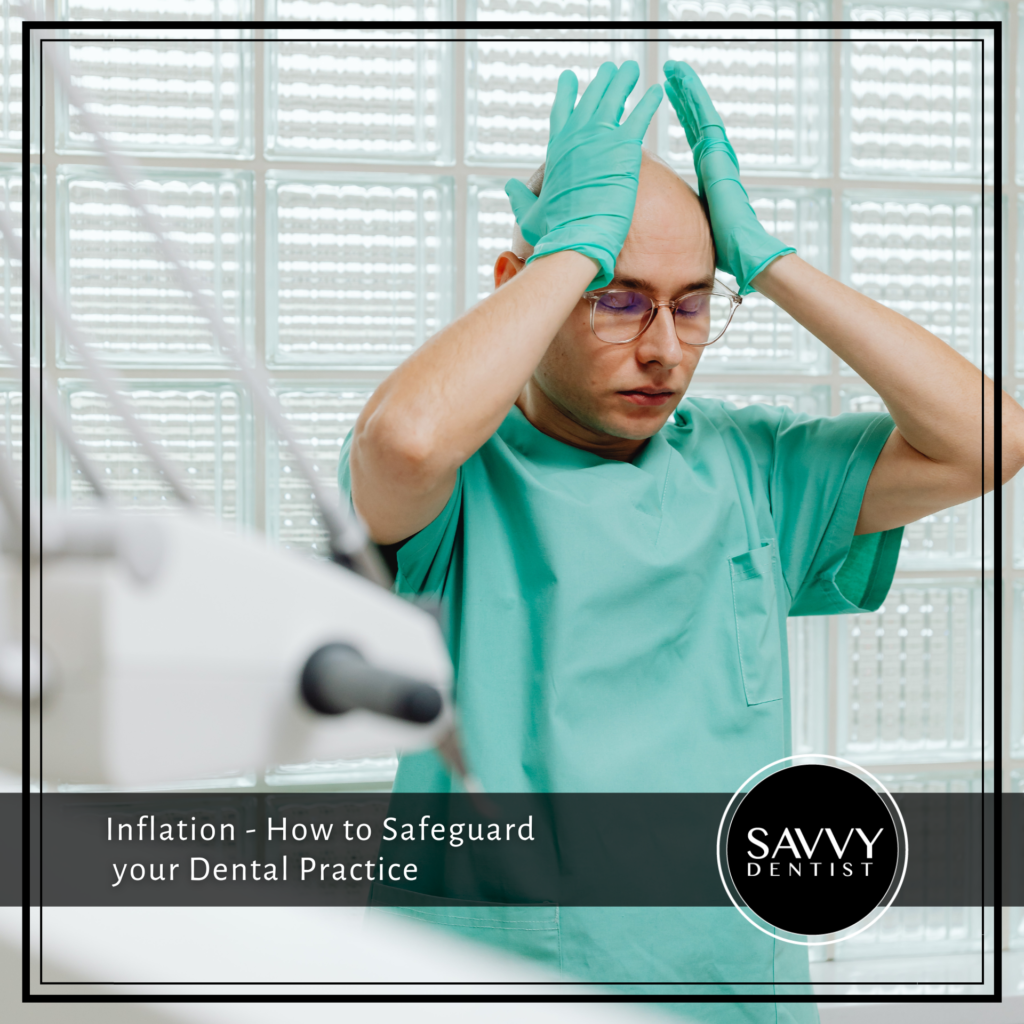Recently, there’s been a lot of talk about inflation which is causing no small amount of fear and uncertainty.
Business owners and consumers alike are wondering what the implications are, and how to best navigate the changing economic environment.
The good news is that inflation is temporary, but your dental practice is (hopefully!) forever. With a few smart moves and keeping your wits about you, you can definitely protect yourself and your practice from the effects of inflation and ride the wave with ease.
What kind of effects can we expect to see from inflation?
There are a few ways in which inflation affects the bottom line in your dental practice.
You might have noticed you have less purchasing power because materials, inventory, and equipment are becoming more expensive. We’ve all seen the palava of fuel costs which also naturally increases shipping costs.
The cost of living is increasing across the board, which means employees income needs go up. Add this to the tight labour market, and you might well be seeing employees negotiating higher wages.
Another concern of many business owners is that consumer purchasing behaviour will change, meaning reduced revenue.
So, how can you avoid the effects of inflation and safeguard your dental practice?
1. Review your fee structure
When your costs are rising, there’s only so long you can wait until you need to update your fees to reflect that. It’s always better to increase fees gradually – even if you look at your numbers and realise you need to make a big jump, do it in increments to reduce the stress on patients.
Of course every practice owner fears backlash or loss of business over increased fees, but our experience shows this is just not the case. We have a tonne of advice, scripts, and frameworks around how to increase your fees which is well worth checking out.
2. Cut costs where possible
Increasing profits and revenue is all well and good – but that often requires an up front investment before you see the return. What’s often quicker (and definitely cheaper), is to reduce your costs.
While you obviously don’t want to scrimp on quality, all you have to do is audit your profit and loss statement to identify wants vs. needs.
3. Build a buffer of cash flow
Cash flow is oxygen for a business – when businesses run out of cash, they go broke. There’s a distinct difference between profit and cashflow, in that a business won’t necessarily go broke when they run out of profit, but will when they run out of cash.
To keep a steady cash flow in your practice, make sure you’re continuing to get the most out of your assets by turning assets into cash.
4. Be agile and adaptable
One of the most important skills you can master as a business owner is being able to move and adapt with the circumstances in which you operate.
We all saw how quickly the world changed in 2020 and the multitude of new factors and parameters we had to work in.
And the business that thrived, were the ones that could pivot and innovate quickly. Keep an eye on changing conditions and trends, and implement swiftly when required.
5. Focus on your critical drivers
Critical drivers are the activities that we know directly lead to our desired results. If the KPI is the desired effect, the critical driver is the action that produces outcomes.
You might have a KPI for “new patients per month.” But the corresponding critical driver in this instance would be “how many times we ask for a referral.” Focus on executing consistently on the critical drivers, and you’ll find the results and the KPI’s take care of themselves.
Critical drivers are those activities that take 20% of our time and energy but create 80% of our results.
They also tend to fall under three categories; marketing, case presentation or operations/delivery.
If you want to figure out your own critical drivers, it’s important to ask yourself “If I’ve had a good month financially, what was present and happened consistently throughout the month?” “When you’ve had a poor month financially, what did I not do that I should have done? What did I do that I shouldn’t have done?” There’s always a level of fear, uncertainty, and risk whenever the economic environment fluctuates.
Inflation brings with it a few anxieties, but all you really need to do is keep a clear head, protect your practice, and implement these five principles consistently. Just remember that this will pass, and you and your practice will make it out the other side.



